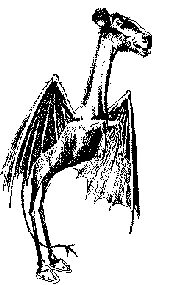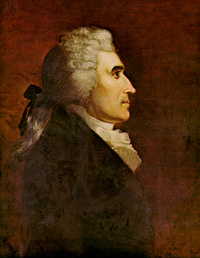Make some time and read "Rediscovering Central Asia," an article from The Wilson Quarterly in which the author presents the fascinating period of Central Asia between 800 AD to 1100 AD. The region we now view as a mountainous void harboring religious extremism, was actually "the intellectual epicenter of the world." Here are a few quotes that help paint a picture of the scientific advances they made:
In astronomy, they estimated the earth’s diameter to a degree of precision unmatched until recent centuries and built several of the largest observatories before modern times, using them to prepare remarkably precise astronomical tables.
In chemistry, Central Asians were the first to reverse reactions, to use crystallization as a means of purification, and to measure specific gravity and use it to group elements in a manner anticipating Dmitri Mendeleev’s periodic table of 1871.
And in technology, they invented windmills and hydraulic machinery for lifting water that subsequently spread westward to the Middle East and Europe and eastward to China.

It's important to point out that these people weren't Arab; they were Persian and Turkic who were born and raised in Central Asia.
Great scientists hailed from this area. Ibn al-Haytham -- founder of ophthalmology -- and Mukhammad ibn Musa al-Khorezmi -- mathematician and astronomer -- came from Central Asia. al-Khorezmi discovered algorithms, and the term "algebra" comes from the title of his famous book on mathematics.
But the two most prominent scientists were the counterparts Abu al-Rayhan al-Biruni and Abu Ali Sina (or Ibn Sina, or Avicenna). al-Biruni became known in the fields of geography, mathematics, trigonometry, comparative religion, astronomy, physics, geology, psychology, mineralogy, and pharmacology. Ibn Sina distinguished himself in medicine, philosophy, physics, chemistry, astronomy, theology, clinical pharmacology, physiology, ethics, and music. Ibn Sina's 14-volume encyclopedia entitled
The Canon of Medicine set off the beginning of modern medicine in the West. That's all very impressive but the most interesting thing is the debates these two men had with each other:
Are there other solar systems out among the stars, they asked, or are we alone in the universe? In Europe, this question was to remain open for another 500 years, but to these two men it seemed clear that we are not alone. They also asked if the earth had been created whole and complete, or if it had evolved over time. Time, they agreed, is a continuum with no beginning or end. In other words, they rejected creationism and anticipated evolutionary geology and even Darwinism by nearly a millennium. This was all as heretical to the Muslim faith they professed as it was to medieval Christianity.
Not only that, but "rulers competed to become their patrons and to support their work." So heretical scientists got support from religious governmental leaders 1,000 years ago in the Middle East. Imagine that.
The region's predominant faith was
Zoroastrianism, which had an "emphasis on the struggle of good and evil, redemption, and heaven and hell. Zoroaster, who probably lived in the sixth or seventh century BC, came from the region of Balkh, but his religion spread westward, eventually to Babylon, where Jews encountered it and fell under its influence. From Judaism its concepts spread first to Christianity and then to Islam." Then adherents of Islam moved back east to convert many Central Asians. Some, though, like the mathematician and poet Omar Khayyam, "were outright skeptics who dismissed religion as fine for the mass of society but a farce for intellectuals."
So 300 years of prosperity. What happened? There are a handful of reasons, including high local tariffs, but the main one is that Islamic orthodoxy took over. Now it's what the region basically still has today. You can blame Nizam al-Mulk and Abu Hamid Muhammad ibn Muhammad al-Ghazali:
The first, Nizam al-Mulk (1018–92), was a highly gifted administrator and also one of the best political scientists of the era. Al-Mulk’s teachers had introduced him to works by the best minds of the Central Asian renaissance. But by the time he was appointed vizier of the Seljuk Empire, the battle against Shiite dissidence was at full tilt. Fearing deviance on every side, al-Mulk proposed to establish a network of schools, or madrassas, that would instill orthodox Sunni Islam and turn young men into well-informed loyalists of the faith. Graduates would reject not only the Shiite schism but any other forms of thought that might be suspected of deviance from orthodoxy.
The second transformative figure, Abu Hamid Muhammad ibn Muhammad al-Ghazali (1058–1111), a philosopher and theologian, launched a frontal attack on the dangers posed by the unrestrained exercise of reason. The title of his most famous work tells it all: The Incoherence of the Philosophers (i.e., scientists). Like the Grand Inquisitor in Feodor Dostoyevsky’s The Brothers Karamazov, al-Ghazali intimately knew his enemy, in this case Aristotelian empiricism, which had attracted the best minds of the region. Attacking Aristotle, he attacked all contemporary rationalists, and to devastating effect.
Together, al-Mulk and al-Ghazali lowered the curtain on independent thought that had been raised in Central Asia for three centuries.
The author of the article holds an interesting perspective on how we look at Central Asia today:
From this descent into obscurity it was an easy step to Dan Rather’s coverage of Afghanistan and the region in the immediate wake of 9/11. Donning a bush jacket and filming at dawn and dusk, he presented the region as inaccessible, backward, exotic, marginal, and threatening--in short, the end of the world. Ibn Sina, al-Biruni, and scores of other world-class geniuses from the region might just as well never have lived.
Even though the Central Asia of Rather’s depiction was and is an evocative image, it carries some bothersome implications. On the one hand, it conjures up a place where the best the United States and the world community can hope for is to limit the damage arising from it. This means destroying whatever threatens us and then getting out. The problem is that the thinking behind such an approach can then become self-fulfilling: A place we judged to be hopeless becomes truly so, and even more threatening than before. The fact that Central Asia and Afghanistan are situated between four--and possibly soon five--nuclear powers does not help matters.
But glimmers of hope still shine with young people over there. So what's the author's solution?
This means focusing more of our support and theirs on reopening the great continental transport routes, instituting freer borders, lowering tariffs, and reducing meddling from the governments. Free trade must also extend to the world of ideas. This means creating the unfettered intellectual space that enabled Ibn Sina and al-Biruni to hypothesize on evolution rather than creationism and even to contemplate the existence of other worlds. Though they each lived under a different government, nobody intercepted their mail and nobody censured their heretical thoughts. In fact, rulers competed to become their patrons and to support their work.
Let's only hope this would be the case.































